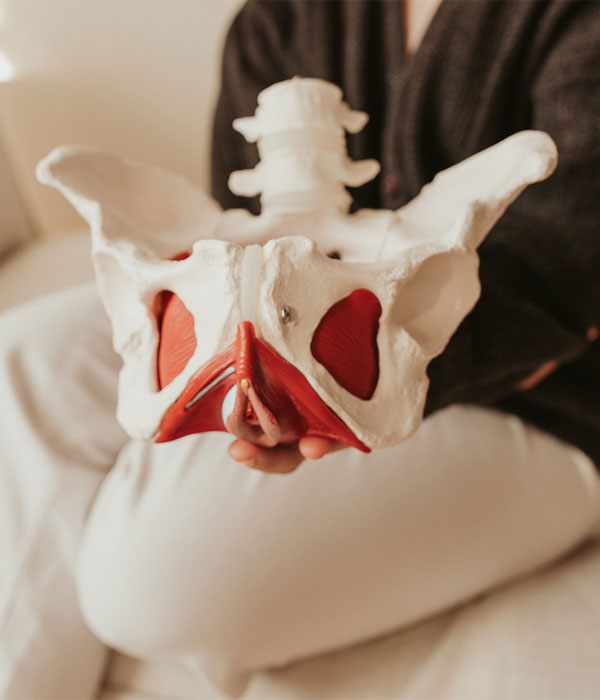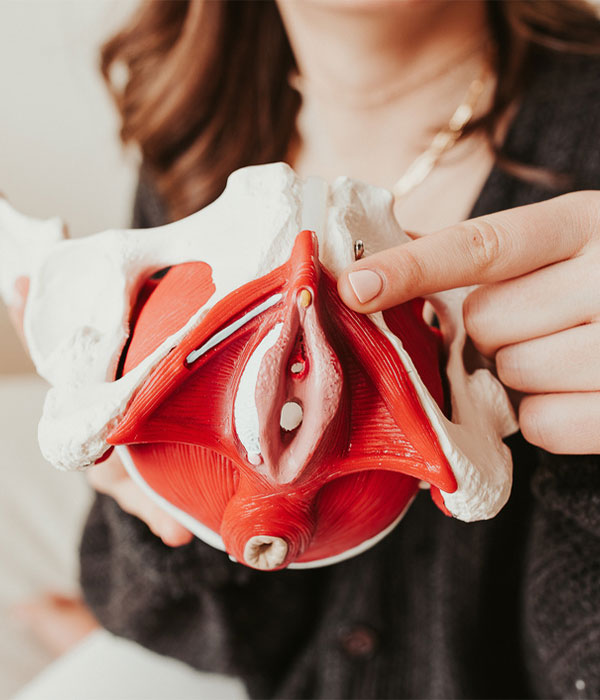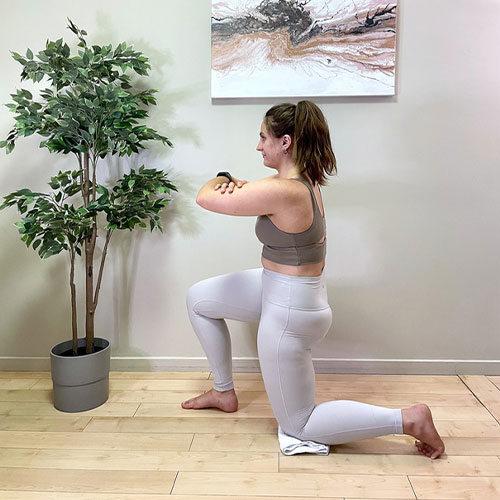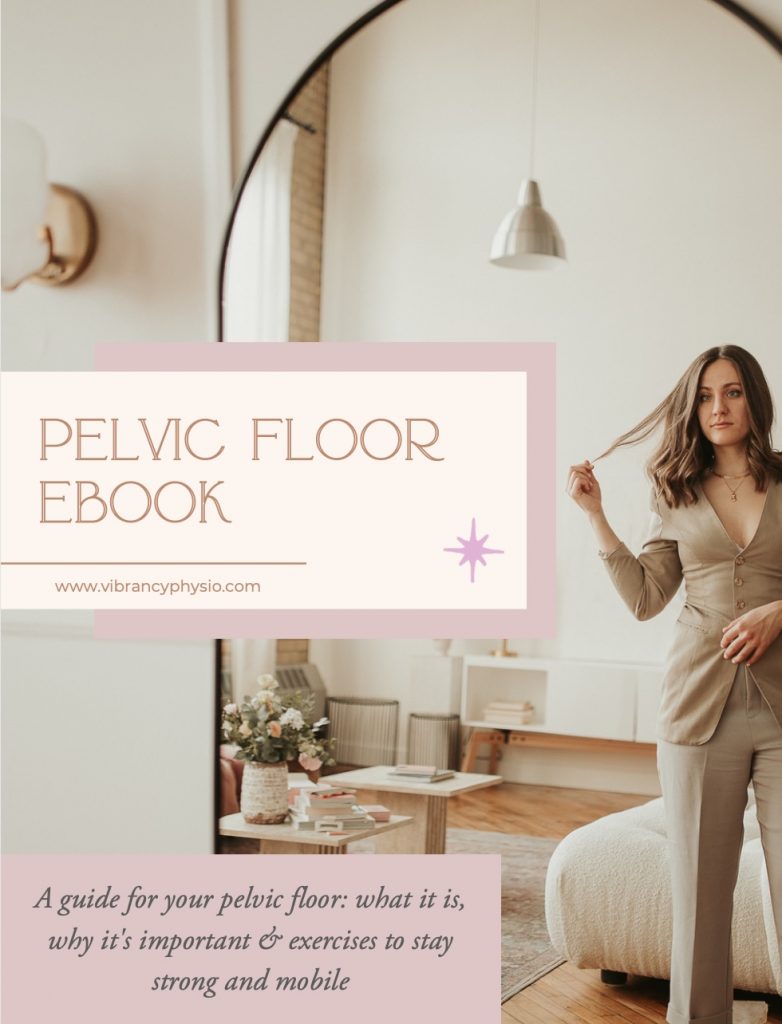Do you…
Pee when you sneeze?
Have urges to pee that are hard to control?
Experience pain with penetration?
Are you…
Pregnant and having new aches and pain?
Looking for guidance to get back to your exercise routine after giving birth?

About Alexis
I’m a pelvic floor and orthopedic physiotherapist.
I’ve always loved learning about the human body and how it heals. The more I learn about the body, the pelvic floor, and how everything connects, the more I realize how little support and information people are given about their pelvic health. I love being a pelvic floor physiotherapist. It allows me to guide people in healing their pelvic floor dysfunction in a way where they feel safe, supported and free of shame and judgement.
The goal of this ebook is to give you more information about your pelvic floor, about how it connects to your bladder and your core, and to give you some of the exercises that I LOVE to give to the people I see in clinic.
If you are still having bladder leaking, pelvic pain and related symptoms after trying these exercises, please book an appointment with a pelvic floor physiotherapist or with your primary health care provider.
My mission is to have open and fun conversations about pelvic health, and to encourage you to heal and honour your body through education & movement.

what is Your pelvic floor?
Your pelvic floor is the group of muscles that sits at the bottom of your pelvis.

Your pelvic floor muscles attach all around the pelvis; from the pubic bone, to the sit bones, to the tailbone. Its shape is like a sling or a hammock.
The famous kegel is what isolates the muscles of your pelvic floor. But that’s not the only thing your pelvic floor can do!

Its role is also to constrict and relax the pelvic openings to regulate things like urine flow and sexual function. The pelvic floor is also part of your core box, so it’s an important stabilizer of the lower back and pelvis.


When we isolate our pelvic floor with a kegel, we want it to be able to do a full contraction and a full relaxation. But, if we’re looking at the big picture, our pelvic floor has to be strong and has to have good coordination to support all our movements without leaking, pressure or pain!!
why is Your Pelvic floor important?
The pelvic floor acts like a sling that supports your organs (bladder, uterus and rectum).
Your Pelvic floor & your bladder
Your bladder is one of the organs that is supported by your pelvic floor muscles. Because of this, tension in your pelvic floor muscles can add pressure to your bladder, which can irritate it. This can then create or increase bladder urgency and pelvic pain symptoms.
If there is tension, weakness and/or reduced control and coordination of your pelvic floor muscles, this can also increase your risk of involuntary urine loss, because the pelvic floor support to prevent leaking is compromised.
This is why assessing your pelvic floor muscles can make a huge difference in helping to reduce bladder symptoms. Please book an appointment with a pelvic floor physiotherapist or with your primary health care provider if you are having bladder symptoms or pelvic pain.
your Pelvic floor & your core box
Your core, your pelvic floor and your breathing are so closely connected!

“I like to think of your core as a box or a pressure canister, because all the sides work together to regulate pressure and give your spine stability.”
You want enough bracing, or pressure, to create low back stability so you can be strong and move while protecting your back from injuries. However, too much and/or mismanaged pressure increases your risk for pelvic organ prolapse, diastasis, hernias, pelvic tension, pelvic pain and bladder leaking.
Sometimes, if we don’t have enough core pressure to gain stability, we can compensate by bearing down to create stability. This increases pressure on your spine, which can help your back feel more safe, but this can add more stress and tension in your pelvic floor muscles. This is why learning to breathe diaphragmatically and learning to properly engage your core can help tremendously in preventing pelvic floor symptoms. Exercises that target breathing and core are included in the section below!
My top 7 exercises for the hip and the pelvic FlooR
These are stretches and strength exercises that I most frequently prescribe to the people I see with hip and pelvic floor dysfunction. Surprise, the kegel is not in here! That’s because the kegel can sometimes aggravate symptoms! The goal of these is to improve your mobility and strengthen your muscles.
If these cause you to have any pain or if they aggravate your symptoms, please consult with your health care provider.
Download my free e-book!
Exercise #1: Hip opener
Hold stretch 5 seconds, let go, repeat in and out for 30 seconds – 1 min, 1-2x/day.
This is great to stretch and release the hip flexors, or the muscles in he front of your hip.


DOWNLOAD my free E-book
And gain access to another 6 pelvic floor exercises you can start doing today at home.

